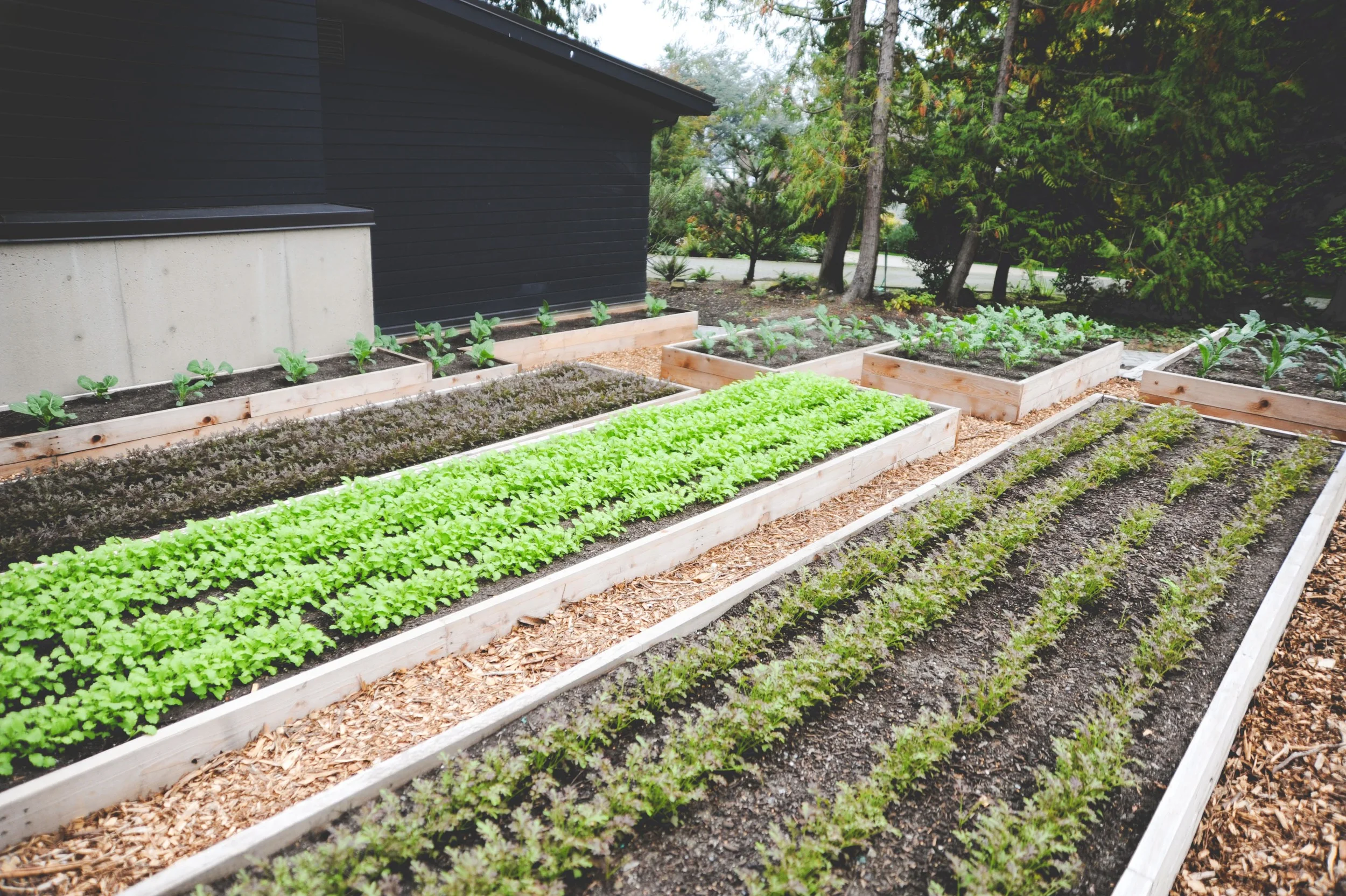Many people don't realize that summer is actually a great time to design and build a new garden! Even though you may miss out on a few spring crops this year, building during the summer often means that you have more time to develop a thoughtful plan and don't feel the pressure of getting the garden set up in time for a certain spring crop (which you will be fully prepared for next spring).
When you first start growing food in the Pacific Northwest, you will hear a lot of people say: “We have a year-round growing season” or “You can grow crops here all winter!”…this is welcome news to a beginning gardener, but what, exactly does it mean?
Lets investigate:
1. With proper planning (and follow through), you can harvest crops from the garden just about every day of the year. The key is: start planning early! Most people are geared up for spring planting by March or April, but don’t realize that planting fall and winter crops starts in mid-July and finishes up in late August or early September. As your spring crops mature and are ready to be removed from the garden, some space will open up for fall crops. June is a good time to talk to nurseries and find out if they carry fall vegetable starts, and also a good time to buy or order seeds for your fall crops.
Many beginning gardeners start their crops too late because they assume that growing fall and winter crops means that the crops are planted in the fall and winter. To have a successful winter harvest, you need to start your crops in mid-summer through early fall (mid-July- September). This way, they are sized up and almost ready for harvest before the low light levels of October set in. Because of the cool weather, fall and winter crops don’t bolt or lose eating quality through the winter. Think about winter gardening as a way to turn your vegetable plot into a giant refrigerator. If you plan properly, you can be harvesting from the garden all through the cold season and into the early spring!
2. Only certain crops are cold tolerant enough to survive fall and winter weather. Your selection of plants will be more restricted than in the spring, but there are some great crops that you can plant for fall or winter harvest. Crops have different levels of tolerance for cold. Some, like spinach can handle consistent frosts and even snow. Others, like beets, should be harvested before winter frosts set in.
Each crop has a lifespan, meaning that it will take a certain length of time for it to grow to maturity. Fall crops with longer lifespan’s must be planted earlier (July) and crops with shorter lifespan’s can be planted later in the season (August and September). Examples of a fall crop with a longer lifespan would be Broccoli, Cabbage, and Kale. Some crops with short lifespan’s are Lettuce, Arugula, and Radishes.
Examples of Fall and Winter Crops:
Arugula
Beets
Broccoli
Cabbage
Carrots
Cauliflower
Claytonia
Cress
Kale
Lettuce
Mizuna
Mustard Greens
Radishes
pinach
3. Find a resource that works for you to reference for more detailed information on fall and winter gardening. Our new book, Food Grown Right, In Your Backyard, provides detailed “crop profiles” for all of the crops listed here and a fall and winter planting suggestions in a Month-by-Month calendar. In addition, Eliot Coleman’s book, Four Season Harvest, contains a detailed introduction to the principles of year-round growing; If you are interested in growing fall and winter crops intensively, check out this book.

